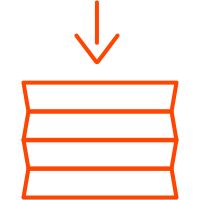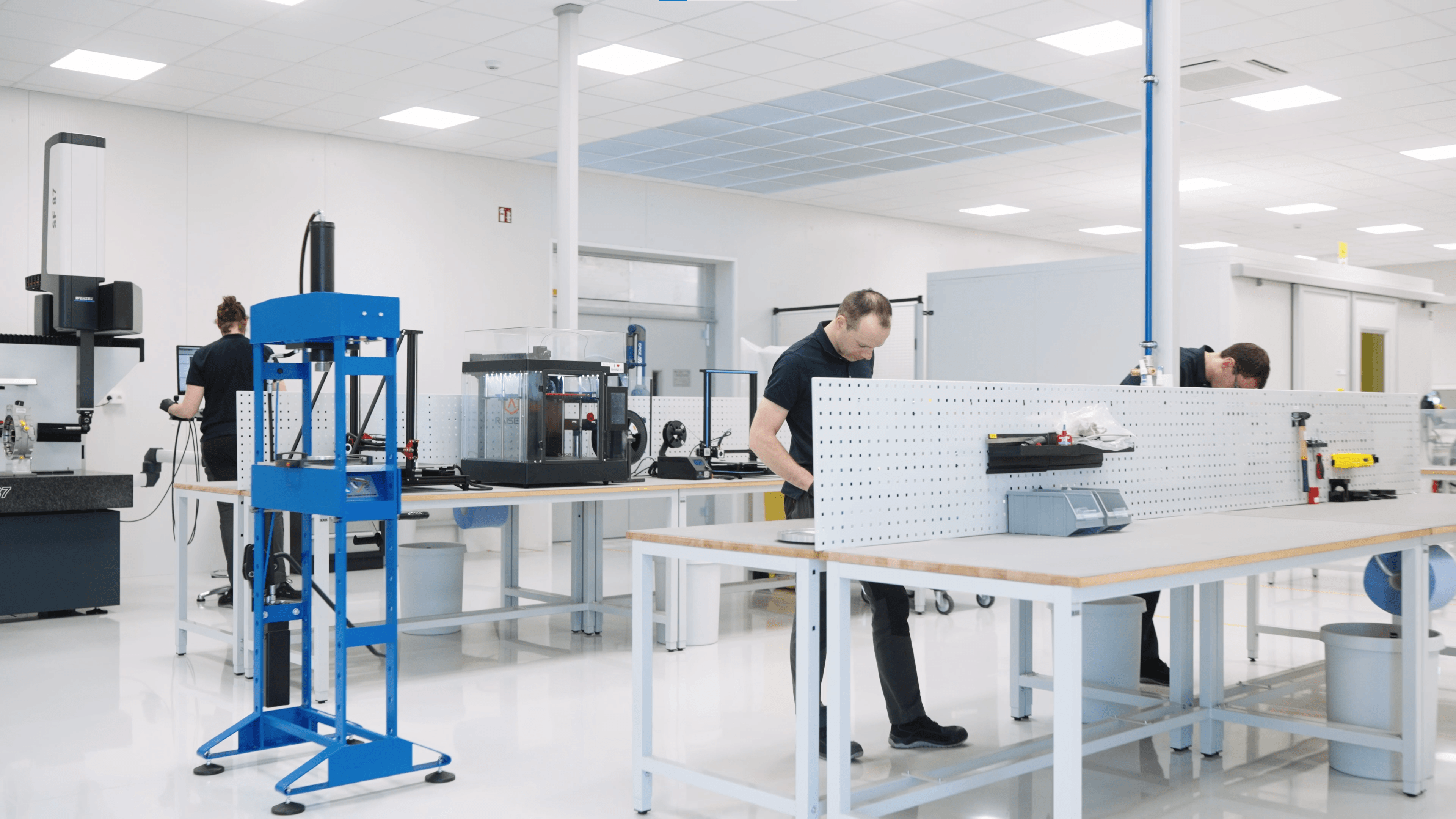Traxial's Technology
Traxial is a high performance electric motor manufacturer and supplier focused on the electrification of the e-mobility market and with a core technological focus on the high-performance yokeless axial flux motor/generator design, holding key patents which will provide a competitive advantage.
Most of the electric vehicle motors on the market today are based on the radial flux topology, first conceptualized almost 200 years ago. In 1821, British scientist Michael Faraday created a machine based on a vertically suspended wire that moved in a circular orbit around a magnet; in 1834, the first-ever rotating electric motor that developed a significant mechanical output power was developed by Russian scientist Moritz Hermann Jacobi. Today again, new electric motor developments such as axial flux are taking place, and the market is poised for disruption.
NEXT GENERATION ELECTRIC DRIVE UNITS
Traxial supplies to the E, F, and S segments of the high voltage (800V) and high-performance battery electric vehicle (BEV) market, and typically work with partners seeking high torque or high-power density machines, or facing limitations due to packaging space that prevents the use of traditional radial flux motors.
Traxial’s high performance electric motor technology is also applicable to hybrid applications (HEV) where the compact axial length can be combined into a neatly packaged P1 or P2 (or other) hybrid powertrain which has a good speed range match to conventional internal combustion engines (ICE’s) running on gasoline, diesel or other hydrocarbon-based fuels.
Traxial has also developed in-house design tools to optimise the yokeless axial flux electro-magnetic design features to match the customer requirements.
HIGH PERFORMANCE ELECTRIC MOTORS

The option of full integration
into electric drivetrains
and e-Axles

The most effective electromagnetic
design results in the lowest
material use per kilowatt

Dual-rotor permanent magnet
configuration to deliver the
highest possible torque-to-weight ratio

Yokeless stator to achieve the
shortest possible flux paths
and lower overall weight

Low iron content
results in lower
iron losses

Concentrated windings
with rectangular-section
copper wire to minimize copper losses
LOWEST STATOR TEMPERATURE THANKS
TO DIRECT OIL COOLING
Core Competitive Advantage: Traxial’s axial flux motors achieve superior performance through patented stator designs and a cooling system that uniformly lowers motor winding temperatures, outperforming all current technologies in stator temperature management.
INTEGRATION INTO ELECTRIC
DRIVETRAINS AND E-AXLE MODULES
Traxial’s yokeless axial flux motor technology, incorporating years of research & development and in-depth collaboration with our customers and suppliers, features a compact double rotor single stator topology with a very short axial length which offers electric vehicle innovators the possibility to design more compact and efficient powertrain solutions. Thanks to the absence of the stator yoke, our yokeless axial flux topology provides a high–power density combined with greater efficiency compared to other topologies. For instance, no other motor on the market can achieve 600Nm 250kW and weighs less than 30kg with an axial length of around 100mm.
The advantages of axial flux motor technology, compared to conventional radial flux electric PM motors, are extensive: axial flux technology offers significantly increased power density, enabling longer range, lighter motor weight, and smaller motor size, opening a host of new and more flexible options for powertrain design.
DESIGNED FOR COST-EFFECTIVE MANUFACTURING PROCESSES
The Traxial high power yokeless axial flux motor/generator design has been developed from the beginning with design-for-manufacturing in mind minimizing manual labor, maximizing the use of automated production processes and focusing on cost effectiveness for mass production.
With fewer magnets and a lower mass than radial flux counterparts, it offers significant savings on raw materials in series production.
IMPACT OF OUR TECHNOLOGY
REDUCING RANGE ANXIETY WITH AXIAL FLUX
The Traxial yokeless axial flux topology offers a solution to one of the main concerns of electric vehicles: range anxiety. Copper and iron losses mainly determine the efficiency of an electric motor. We’ve developed solutions to reduce these losses significantly:
The absence of a stator yoke (yokeless axial flux motor) significantly lowers the iron mass and therefore the iron losses. Concentrated windings with a very high copper fill factor result in optimal use of copper and as a result;, low copper losses.
The Traxial axial flux motor technology delivers the highest efficiency over a wide speed range, resulting in more vehicle range compared to traditional EV motors. Additionally, our compact and lightweight design can easily be integrated into next-generation powertrain configurations, creating extra space for increased battery storage capacity.
GET IN TOUCH
We appreciate your feedback and are happy to answer your questions.
The answer to some of the most common questions about our technology and products can be found on our FAQ page or our blog.
A different question? Please select your topic from the list below and your request will be forwarded to the responsible team. You will be contacted soon.
Contact Us


